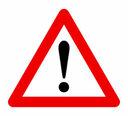Buying the correct footwear is very important for toddlers and children as the foot is a complicated part of the body.
The foot is soft and pliable from birth and if the wrong footwear is worn for prolonged periods of time it may cause damage and lead to problems later in life.

Young children who are not yet walking do not usually need shoes, but you may wish to buy them soft shoes which help to protect the feet and keep baby warm when you are outside. Please check regularly to make sure the toes have room to move.
Some children benefit from being in firm shoes before they walk. Your child's healthcare professional or physiotherapist will advise you on this.
Buying footwear for your child
Consider the following when looking for suitable footwear for your child ...
Check your child's footwear regularly
- When checking the current pair of shoes there should be approximately 1cm space at the end of the toes inside the shoes - if shoes are too tight they can stop the toes from having enough space and could stop the foot from growing correctly (remember also that socks and tights must fit and not be too tight for growing toes).
- Get you child's feet measured by a professional.
- Shoes should be comfortable from the start - if new shoes need to be "broken in," it means either they were not properly designed or not properly fitted for your child's foot.
Cost
- Don’t assume that because a pair of shoes is more expensive that it is automatically better than a cheaper option.
The shape of the shoe
- The front of the shoes should be wider than at the heel.
- Avoid shoes with pointy toes as these can restrict the movement at the toes, especially if your child has broad feet.
Support and flexibility
- Shoes should provide support to the foot particularly around the heel - shoes and sandals should have a solid / enclosed heel cup (you should not be able to squeeze the sides together or push the back down).
- Aim to buy a shoe which allows the foot to bend but not so soft that it does not support the foot enough (if you can twist the sole, the shoe is too soft and will not support the foot well).
Non-slip soles
- Shoe soles should have has sufficient friction prevent slipping and falls.
Shoe fastenings
- Consider how the shoe is fastened, ideally shoes should have laces, buckles or Velcro fastenings to help hold the heel in place during movement.
- Where possible avoid slip-on shoes, sheepskin boots (e.g. Ugg boots), rubber clogs (e.g. Crocs) and jelly shoes which offer very little support for the foot and can cause children to clench their toes to keep the shoe on which may cause pain if walking long distances. There are occasions when a child may want to wear these, such as wellington boots when it is raining, and it may be appropriate for them to do so, but as a guide, aim to wear supportive footwear if you are expecting your child to be doing any amount of walking or activity.

WARNING: Types of shoes
- Slip-on shoes (e.g. Ugg boots, Croc and Jelly shoes) - avoid these where possible as they offer very little support for the foot. There are occasions when a child may want to wear these, such as wellington boots when it is raining, and it may be appropriate for them to do so, but as a guide, aim for then to wear supportive footwear if you are expecting your child to be doing any amount of walking or activity.
- Plimsolls - offer no support, do not come in half sizes and are only one width so a good fit is very hard to achieve. Many schools insist on plimsolls for sports but trainers are preferable when possible.
- Flat fashion shoes (dolly shoes or ballets flat) - tend to have thin soles that do not provide enough cushioning for the feet and can often be very shallow around the heel and are often worn a size too small so they do not fall off.
- High heeled fashion shoes - can cause the foot to slip forward in the shoe and can lead to weight bearing through only the forefoot which can cause pain.
- Trainers - generally suitable as long as they are measured correctly and try to avoid those with synthetic linings which can cause excessive sweatingf you are provided with insoles (orthotics) it is important that these are taken with you when buying shoes to ensure that they fit correctly in the shoe and leave room for the foot. Check your child walking in the shoes in the shoe shop and make sure the shoe is not slipping up and down at the heel or their foot is being pushed out of the shoe at the back.
If you are provided with insoles (orthotics) for your child, it is important that these are taken with you when buying shoes to ensure that they fit correctly in the shoe and leave room for the foot.
Check your child walking in the shoes in the shoe shop and make sure the shoes are not slipping up and down at the heel or that the foot is being pushed out of the shoe at the back.
